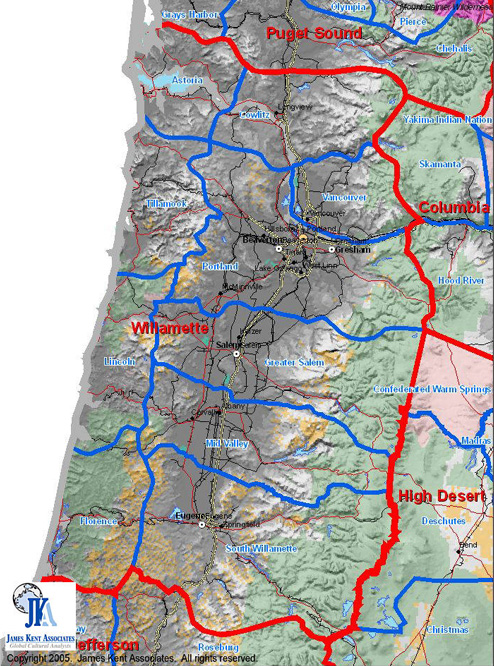Social Resource Unit (SRU)
Community Resource Units
Human Resource Units
Social Resource Units
Cultural Resource Units
Global Resource Units
Back to Human Geographic Mapping
A Social Resource Unit is best characterized by a sense of belonging. These are rather large areas and one's intensity of perception as to the Unit's boundary is much more general than at the Human Resource Unit level. A general feeling of "oneness" is held by those who are a part of this regional Unit; and a general understanding and agreement on values and the attributes of being a part of the Unit.
The physical and biological environment has a large role in development of the cultural pattern at this level of the progression because, to a large degree, they determine the kinds of basic industries available for people to develop their culture around, and how the industries function in the most effective manner to preserve and strengthen the cultural pattern of the Unit.
Population density is also a factor that defines and delineates Social Resource Units. Large areas of high population density separate Social Resource Units from surrounding areas of lesser population, but they still reflect in their cultural pattern the broad physical and biological environment within which they occur.
Social Resource Units are usually larger than single cities (the Front Range Corridor SRU, for example, is larger than the metropolitan area of Denver), but are smaller than most states. However, a Social Resource Unit will sometimes include portions of several states, as is the case with the Four-Corners SRU that includes portions of Colorado, New Mexico, Arizona and Utah. The megalopolis of New York City, which includes portions of New Jersey and Massachusetts, is another example of how Social Resource Units are not confined by administrative or legal boundaries. Social Resource Units aggregate to Cultural Resource Units in the Natural Borders mapping system.
Social Resource Units aggregate to form Cultural Resource Units in the Natural Borders mapping system.
Map of the Willamette Social Resource Unit, Oregon

Cobalt Web Designs